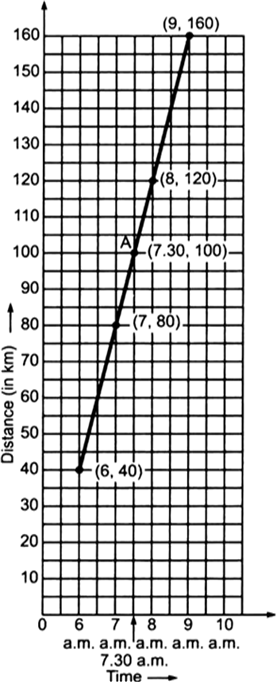 Long Answer Type
Long Answer Type
(a) What information is given on the two axes?
(b) From where and when did the car begin its journey?
(c) How far did the car go in the first hour?
(d) How far did the car go during (i) the 2nd hour? (ii) the 3rd hour?
(e) Was the speed same during the first three hours? How do you know it?
(f) Did the car stop for some duration at any place? Justify your answer.
(g) When did the car reach City Q?
Plot the following points on a graph sheet. Verify if they lie on a line:
(a) A (4, 0), B(4, 2), C(4, 6), D(4, 2.5)
(b) P(1, 1), Q(2, 2), R(3, 3), S(4, 4)
(c) K(2, 3), L(5, 3), M(5, 5), N(2, 5)
 Short Answer Type
Short Answer Type True Or False
True Or FalseA.
A point whose x coordinate is zero and y-coordinate is non-zero will lie on the y-axis.B.
A point whose y coordinate is zero and x-coordinate is 5 will lie on y-axis.C.
The coordinates of the origin are (0, 0). Short Answer Type
Short Answer Type


(i) How much distance did the car cover during the period 7.30 a.m. to 8 a.m.?
(ii) What was the time when the car had covered a distance of 100 km since it’s start?
Steps:
I. Draw the axis.
II. Choose suitable scale along x-axis and along y-axis.
III.Mark time (in hours) along x-axis and distance (in km) along y-axis
IV.Plot the points (6, 40) (7, 80), (8, 120) and (9, 160).
V. By joining the points we get the required graph.
(i) In the graph, draw a perpendicular at the point indicating 7:30 a.m. on the x-axis such that it meets the graph at A. From A draw a line parallel to x-axis to meet y-axis at 100 km.
∴ Distance travelled between 7:30 a.m. and 8:00 a.m.
= 120 km – 100 km
= 20 km
(ii) 7:30 a.m.
 (i) Does the graph pass through the origin?
(i) Does the graph pass through the origin?
